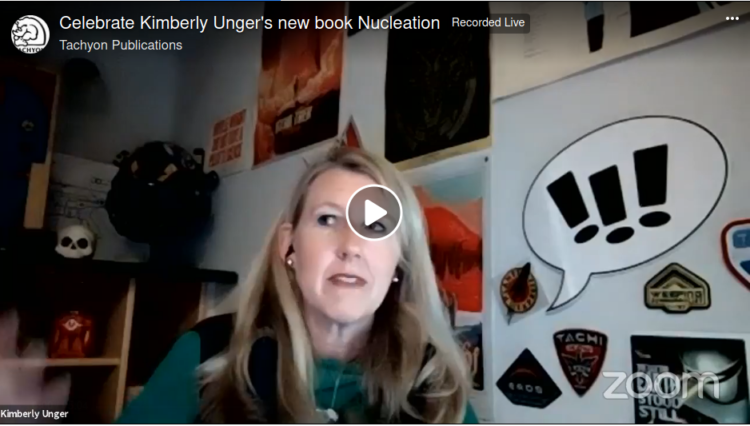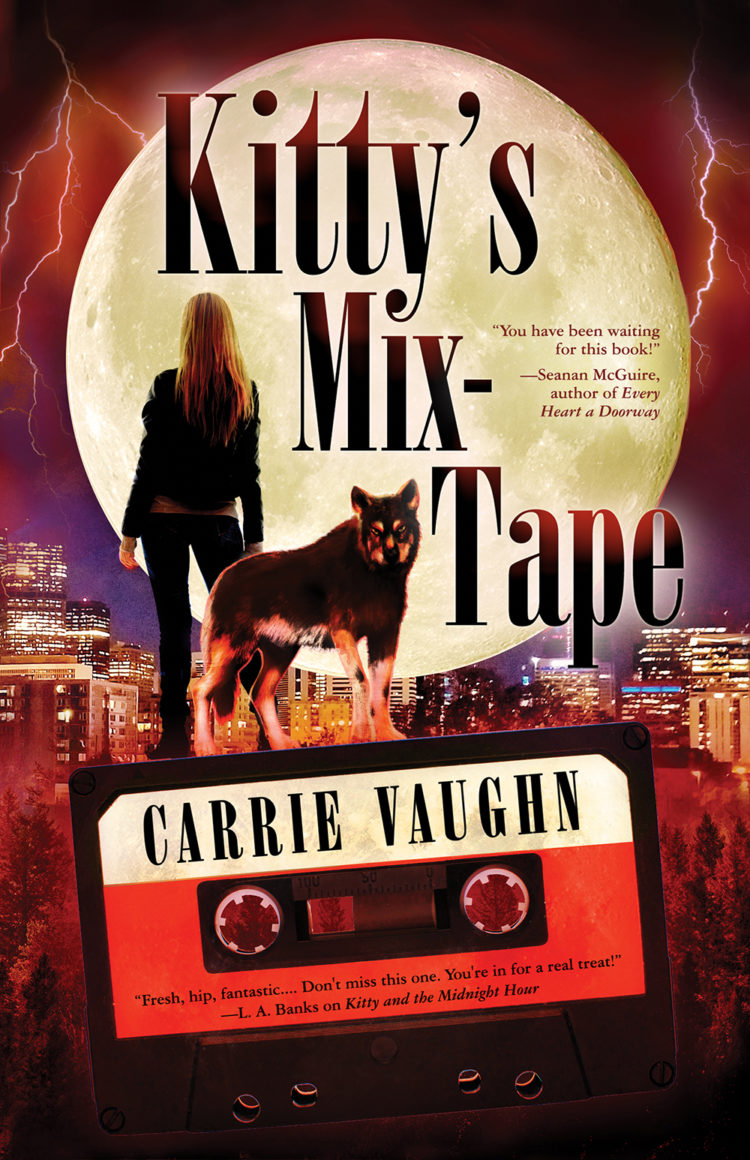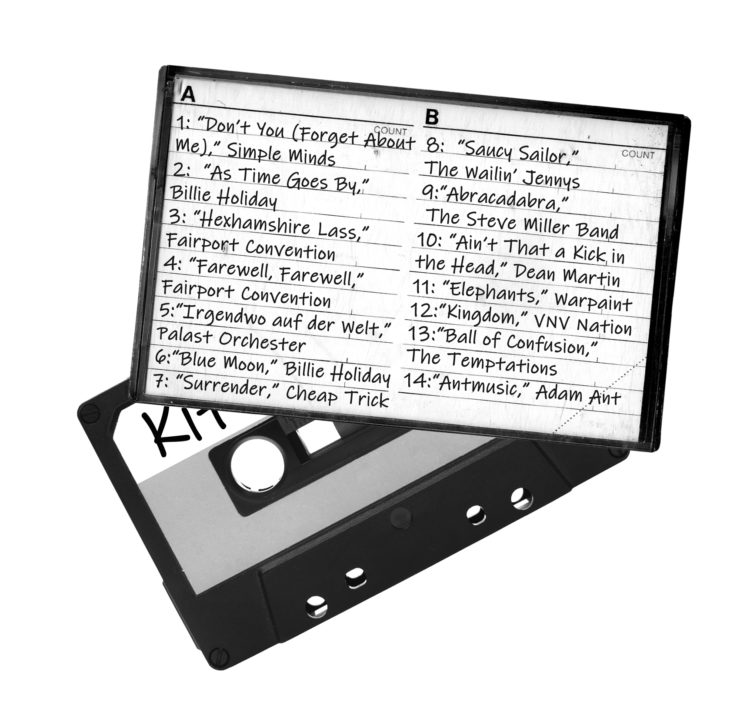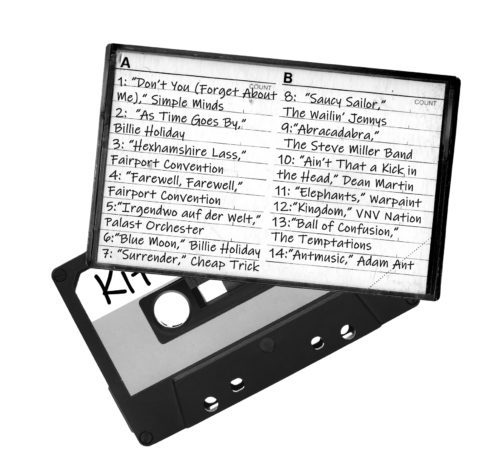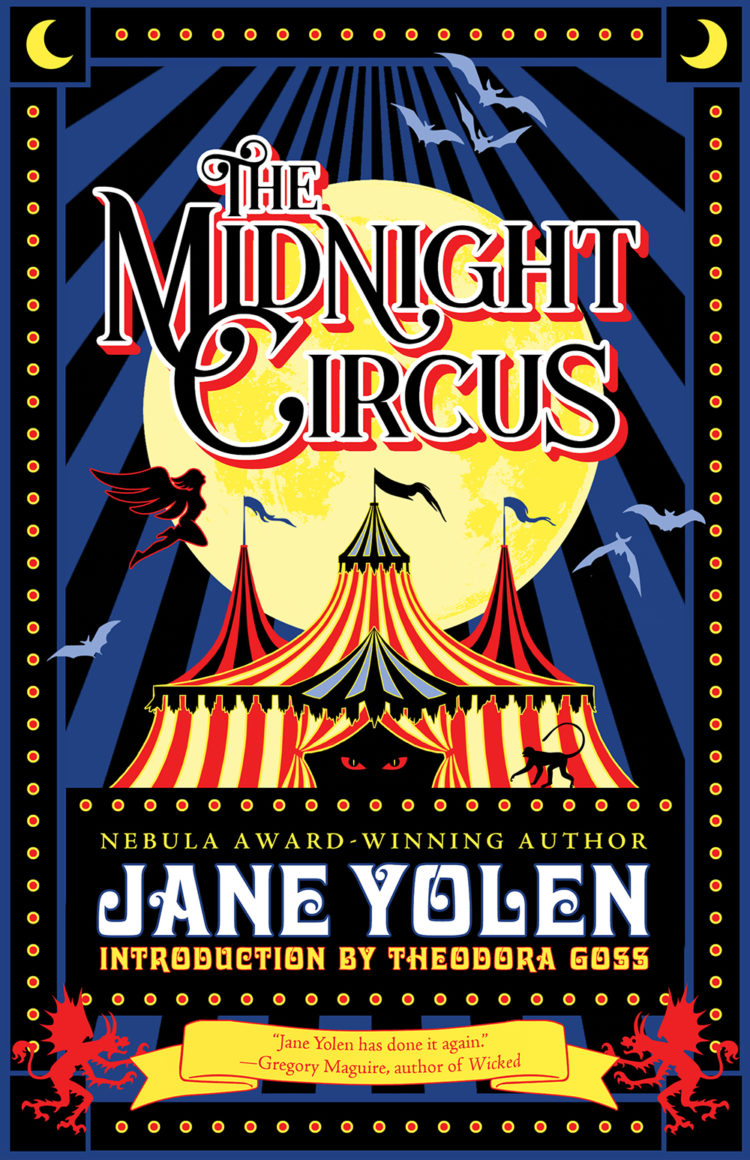Get to know Kimberly Unger and her debut novel NUCLEATION
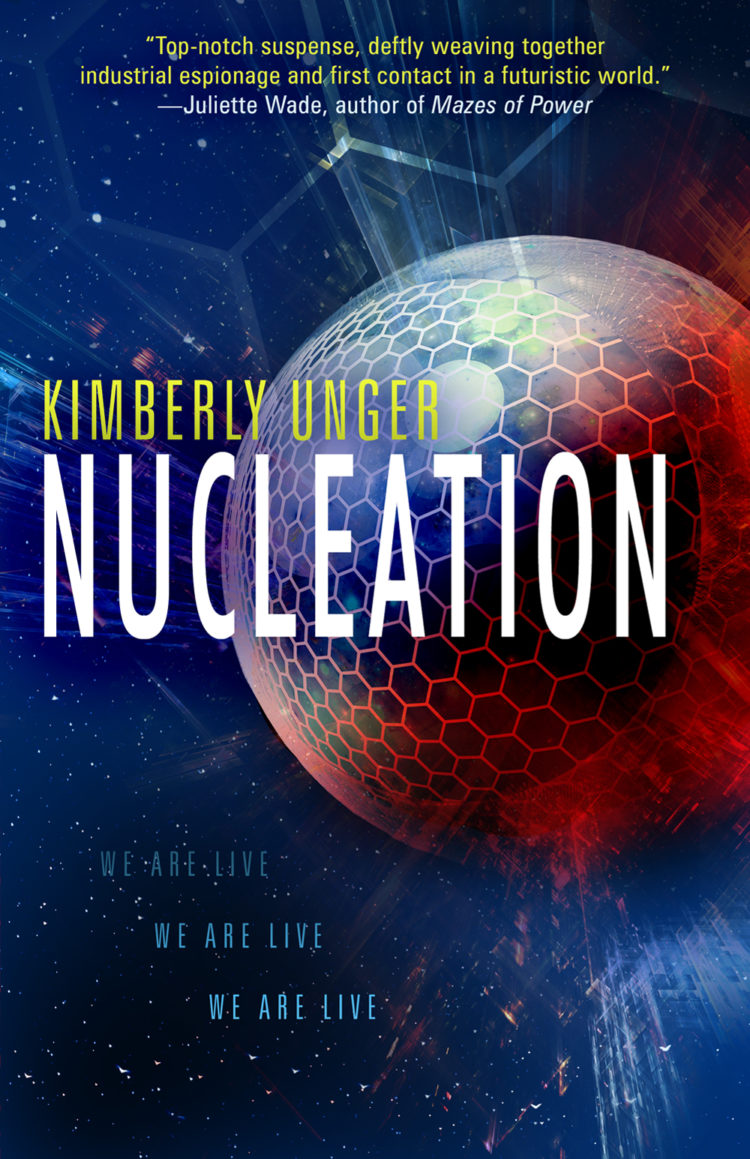
In celebration of the release of NUCLEATION, which BOOKLIST recommends “for fans of Richard K. Morgan’s Altered Carbon and Martha Wells’ Murderbot series,” Kimberly Unger engaged in a virtual tour.
On FACEBOOK LIVE, Unger sat down for a chat with the incomparable Cat Rambo.
Unger contributed essays to both Mary Robinette Kowal’s MY FAVORITE BIT and John Scalzi’s THE BIG IDEA.
My favorite bit of NUCLEATION is front and center from the very first page, in fact it’s the bit that got me to write the entire rest of everything.
MY FAVORITE BIT
NUCLEATION is a story about a top-tier pilot who operates robots (waldos) by remote from a billion miles away via a quantum communication link. When the story opens Helen Vectorovich is at the top of her game. She and her partner Ted have been awarded the very first, very public shift on a multi year mission that will open up a whole new set of resources for the Earth colonies. It’s a big deal, a big honor and they… are… rocking it.
My name is Kimberly Unger and I am here to talk to you about one of the Big Ideas behind my debut novel, NUCLEATION.
THE BIG IDEA
At some point, we stopped plunging headlong into the great unknown and did the smart thing, the safe thing. We let the robots go first. We send probes and satellites and rovers and landers, we peer through telescopes and send out radio signals. We bounce frikkin’ laser beams off everything in frikkin’ laser beam range. All of this, every signal, every nuclear-powered tin-can, gets out there before we do.
Why?
Because we don’t want anyone to die who doesn’t have to.
She, also, participated in a REDDIT AMA at r/books.
vorpalcheeseknife
You write about virtual reality and work for a video game company. How does your day job inform your fiction?
Agiliste AMA Author
The biggest takeaway I have from my day job experience is really about where people and technology intersect. What happens when someone has a problem with a games interface or what kind of mindset do you develop when you are used to working with alpha or beta builds of software. Helen’s tendency to just “hack around” problems, rather than calling IT for a fix is definitely informed by my work experience, for example.
llh23
Wow, did not hear about NUCLEATION till now, but I am ordering right away. It looks fantastic.
Who was your favourite sci-fi author when growing up? And who is your hidden gem that not enough people read? Mine is John Wyndham.
Agiliste AMA Author
Fabulous! I hope you enjoy it.
I was (and still am) a card-carrying Asimov fan. He had an ability to extrapolate against existing technology that really came across as believable, I could see how to get to that future from here.
Ron Goulart would be my pick for hidden gem. It’s been a very long time since I read those books, but when I was younger I used to haunt my local used books stores looking for copies his work.
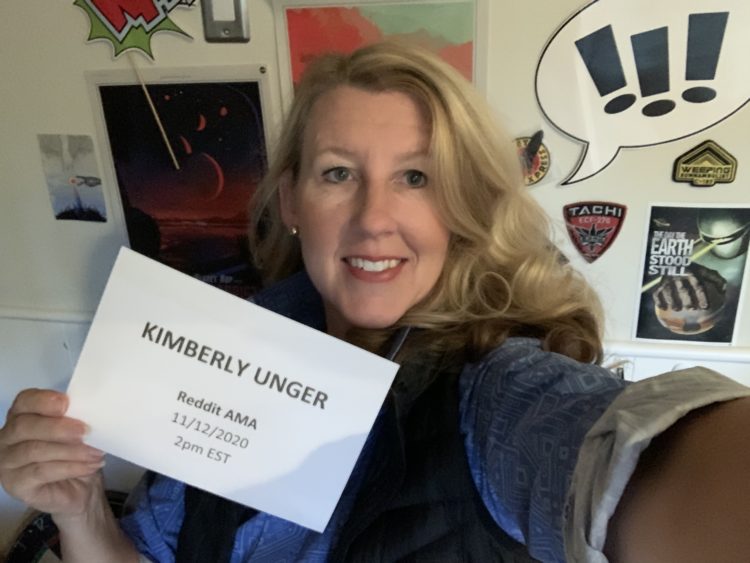
Paul Semel, on his eponymous site, interviews the author.
NUCLEATION sounds like it’s a cyberpunk sci-fi space opera story. Is that how you’d describe it?
I’ve always thought of it as a “nanotech space opera.” My team at Tachyon has been referring to it as a “vROP” (VR Opera) because that kind of telepresence is my key to everything when you’re piloting by wire. There was a challenge here, about how to get that fast-actiony feel while dealing with world-spaces that really are tiny. The “eenies” (this universe’s version of nano-bots) are the size of an orchid seed, so an all-out clash between two massive armies can fit on the palm of your hand. VR is a great medium for adjusting the perceptual sense of scale and giving a physically tiny (but critically important) event the gravitas it deserves.
Now, while NUCLEATION is your first novel, you’ve previously written some short stories and novellas. Are there any writers who had a big influence on Nucleation but not on anything else you’ve written?
There are a handful of writers who unknowingly contributed. Long before VR even became a thing, Eric Nylund’s Signal To Noise really cemented the idea for me of VR as a functional computing metaphor (much the way your Windows desktop is a metaphor) rather than a far out there concept. I also loved the shared virtual spaces of Diane Duane’s Omnitopia as a way of life, and Walter Jon Williams’ Aristoi and the idea that nanobots can go rogue figures in there as well.
TOR.COM shares an excerpt from the novel.
The Golfball was reaching the end of its line drive—the hole in one an orbit around an orphan star. No planets depended on that burning ball of resources for life. Nothing would suffer when it launched its payload and started consuming every asteroid within reach. The starship-sized jump-gate would take a year to complete, after which the job of stripping Otlyan23’s asteroid ring of every valuable asset could begin in earnest.
“Mark local time 24:48:16.” The NAV’s voice wasn’t in Helen’s ear, precisely. She didn’t have ears out here. Different bodies took time to get used to, and ears were a luxury item. The vibrations of sound shivered along the walls of the Golfball’s interior and filtered through receivers placed along her spine. “Station live. Station live. Station live.”
“Live and well, Ted. Operator Helen Vectorovich, personal identifier T4T4-957.” She responded automatically, rattling the words and numbers off without thinking. Helen was only the first shift on this year-long project and every shift started this way, every mission, every time. She refocused her vision as Ted worked to unlock the capsule controls from his station in the Fishbowl, a billion miles away. The lights around Helen brightened, moving from hibernation blue to heartbeat yellow. System after system came to life after two years of silent spinning through the black of deep space. From Helen’s perspective through the eyes of the waldo, the room opened up like a cathedral, lights and buckypanels rising around her to a point just over her head. In real-world terms, the whole space was the size of a basketball, but from inside the waldo it was oh, so much bigger than that.

